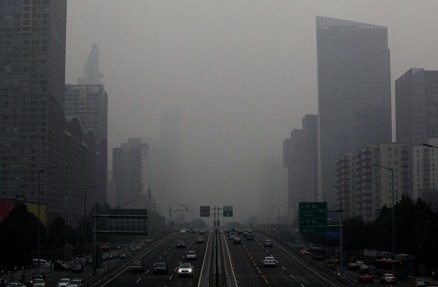The Chinese government has set in place the development of its national air quality monitoring network, said to be the largest initiative made for a developing country, the Beijing Times reported.
An environment official told the paper that the network was completed one year ahead of schedule ad now complies to new standards issued by the Ministry of Environment in 2012.
According to the report, new indices had been added to the 2012 air quality standards, which include into its scope the monitoring of PM2.5 (airborne particles measuring less than 2.5 microns in diameter), ozone (O3) and carbon monoxide (CO).
Wu Xiaoqing, the vice minister of environmental protection, said on April 1, Wednesday, in a conference in Wuxi, Jiangsu Province, that the government had spent in 2014 nearly 436 million yuan ($70.36 million) on third-phase construction of air quality monitoring capacities composed of 552 monitoring spots in 177 cities. He said that the first two phases were completed in 2012 and 2013.
Wu said that the government would continue to step up efforts to improve the monitoring capabilities of the country, to curb heavy pollution as well as provide analysis of other particles in the air.
The minister also asked all provinces, autonomous regions, municipalities and capital cities, including regions on provincial-level status in economic structure and management, to ensure the completion of their air quality forecast and alarm systems by the end of October this year.
According to the report, 13 pilot cities, including Beijing and Tianjin and Shanghai, are expected to finish the compilation of their emission lists by the end of November, and 26 key cities are also expected to complete their analysis on pollution sources by the end of the year.
Government data showed that particles in the air in most Chinese cities came from industrial production, motor vehicles, coal burning and dust.
In related development, the city of Beijing is set to launch the tree-planting campaign called "Plant versus PM 2.5" which aims to improve air quality in the capital.
Forestry officials said on April 2, Thursday, that new saplings with better dust-retention capabilities will be planted along Beijing's roads to replace old ones.
The report said that 18 plants have been identified and selected, which are considered to be more efficient at retaining PM2.5 particles. These include the Chinese scholar tree, ginkgo, purple leaf sand cherry, and lilac.
Tongzhou district will take the lead in the activity, the report added.



























